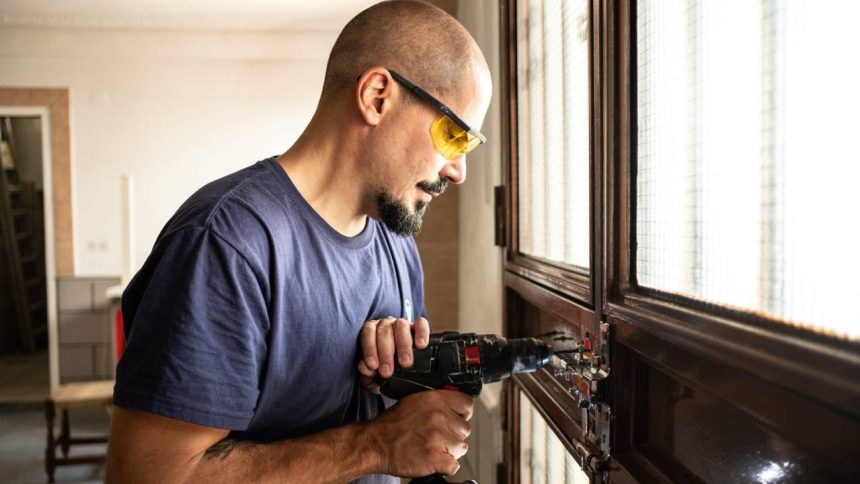Key takeaways
- Home improvement loans work similarly to other finances.
-
The application steps change slightly depending on the type of financing you choose.
-
Specific eligibility differs by lender, but you will likely need a score in the mid 600s.
Getting a home improvement loan is not too complex, but the process of finding the right financing option can be somewhat intimidating due to the number of choices out there.
Your budget, overall financial situation and credit score will play key roles in determining which type of improvement loan you should go for and the steps you need to take to apply for it.
Steps to get a home improvement loan
To increase your approval odds, follow these steps when applying for a home improvement loan.
1. Research the different types of home improvement loans
There are four main options to fund home improvements, each with its own set of benefits and drawbacks.
- Personal loans: These have fixed interest rates and monthly payments, making them the best choice for borrowers who have a set budget. Depending on the lender, you could borrow up to $100,000 with a repayment term of up to seven years.
- Credit cards: If you have an ongoing home improvement project for which you don’t necessarily have a budget, a credit card can be a great solution as they provide a spend-as-you-go approach. But credit cards have a higher interest rate than personal loans and home equity loans, so it’s best to pay them off in full each month rather than carrying a balance.
- Home equity loans: With a home equity loan, you can borrow up to 85 percent of your home equity as a lump sum, similar to a personal loan. But unlike a personal loan, home equity loans are secured by your property. This means lower rates, larger loan amounts and the risk of foreclosure if you default.
- Home equity lines of credit (HELOCs): These also use your home’s equity as collateral but function more like credit cards. If you have a series of projects with variable budgets, a HELOC may be a good choice to keep things flexible. Plus, you’ll typically make interest-only payments during your draw period, which can keep costs down.
If none of these are viable options, you can also look into government programs, such as the Department of Housing and Urban Development’s (HUD) Title I Property Improvement Loans. These programs allow you to renovate your home for next to nothing — if you qualify.
There are also a number of different apps that are dedicated to helping users solve their home improvement goals at every step of the way. Consider browsing through the best home improvement apps for your specific needs.
Do your research to determine which option best suits your needs and fits your budget. Since every home improvement project is different, you will need to make the decision based on how much you have to spend and how flexible your costs are.
2. Shop around for rates
Once you know what type of home improvement loan you need, you will need to compare lenders. Consider interest rates, borrower requirements, fees and loan terms. These will all impact the overall cost of your loan.
The maximum amount you can borrow should also be a factor in your decision. A credit card likely won’t be enough if you need to fund a large renovation or project. If this is the case, a loan that uses your home equity — and gives you a decade or more to pay it off — will be the better choice in the long run. Likewise, a small project could be charged to a credit card you already have if taking out another loan isn’t in the cards for you.
3. Gather documentation
Almost every lender has the same general requirements. You will need to submit a few basic pieces of information about yourself to get started, including:
- Copy of a valid ID, like a driver’s license or passport.
- Proof of income, like pay stubs or tax returns.
- Proof of residence, like your utility bills or bank statements received in your address.
Your current debts, housing payment and total income will also affect the rates and terms you qualify for, so keep this information handy. Research each lender’s application and documentation requirements to make this process as pain-free as possible.
4. Get prequalified
Take advantage of lenders that offer a prequalification process. This gives you a quote that allows you to preview your approval odds, predicted interest rate and the total cost of your home improvement loan. Plus, prequalifying doesn’t require a hard credit check, so you won’t have to worry about it impacting your credit score.
You can apply for prequalification with multiple lenders at one time to simplify the comparison process. This way, you can see how much you can borrow, what it will cost and if it will cover your project without having to sign any official paperwork.
5. Fill out your application
Once you’ve compared lenders, you will need to be in touch with your primary choice to finalize the application. This may require more paperwork or other information, so keep up with what your lender needs.
Afterward, your lender will deposit your home improvement loan funds into your chosen bank account. You will then be able to spend as you need and start repaying with monthly payments.
Home improvement loan requirements
Each lender has its own eligibility requirements, which can also vary depending on the type of home improvement loan you’re applying for. That said, these are some common factors to consider.
- Good credit score: According to FICO, a good credit score is one that’s 670 and above. Some lenders offer loans to borrowers with credit scores below that threshold. However, that typically comes attached to higher interest rates and fees.
- Low debt-to-income (DTI) ratio: Your DTI ratio measures how much income you have left after paying your monthly obligations. Most lenders require you to have a DTI of 35 percent or less for approval.
- Steady source of income: You’ll be asked for proof of income, like pay stubs, bank statements, W2s or tax returns. Some lenders may also have a minimum income requirement.
Besides these, you’ll need to have a valid bank account and be a US citizen or permanent resident to apply for most home improvement loans. If you plan on borrowing a home equity loan or HELOC, you will also need to have sufficient equity in your property.
How to choose the right type of home improvement loan
When it comes to home improvement loans, the right choice will depend on the size of your project, your ability to make payments and the amount of risk you want to take on. A personal loan or credit card will be better for smaller projects on a lower budget.
For larger projects, such as a full kitchen remodel or adding insulation to an old home, consider using a home equity loan or a home equity line of credit. Both of these options can provide sufficient funding while keeping costs low by using your home as collateral.
How to decide if a home improvement loan is right for you
Home improvement loans are good if you have a large project to tackle or need emergency repairs and are tight on money. It may be the right financing option if you’re able to afford your monthly payments comfortably without jeopardizing other necessary expenses.
However, if after crunching the numbers, payments tighten your budget too much, it may be better to wait, pay down some debt and work on your credit first to avoid getting into a tricky situation.
The bottom line
The application process for a home improvement loan is similar to any other personal loan. You’ll need to submit some basic information to ensure you meet all the lender’s requirements when you apply.
Before signing on the dotted line, compare the different types of home improvement loans and lenders available to ensure you get a loan that fits both your needs and monthly budget.
Read the full article here
















